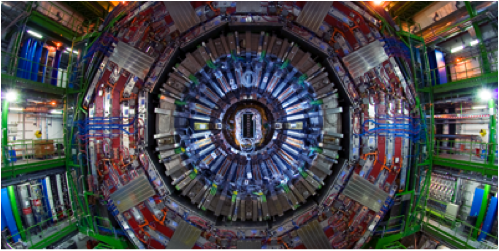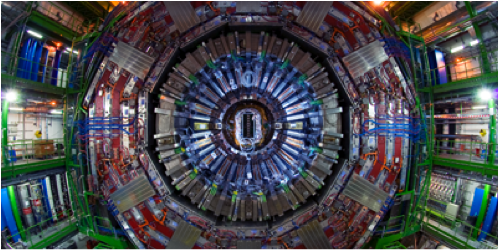Strange Beauty
One would think that by now, apart from big game like the Higgs boson, high-energy physicists would have bagged nearly all of the beasts on the particle horizon. There are still a few trophies to be taken, among them a group of baryons, each of which comprises one strange quark, one quark (meaning bottom or beauty), and a third quark. When the third member of the trio is an up or down quark, the particle is known as a baryon. The Tevatron at Fermilab observed particle decays consistent with some of these states, but a full accounting was not available. Now, in a paper in Physical Review Letters, the CMS team at the Large Hadron Collider at CERN report their observation of a new particle that they conclude is likely to be the .
New particles are nearly always found by watching what they turn into, and the CMS collaboration observed a cascade of decays from to to to muons, pions, and other bits and pieces. Careful reconstruction based on data from proton-proton events at the LHC puts the particle mass at , with a statistical significance of more than standard deviations.
Nailing down further properties of the remains a challenge, but the observation of a new member of the -baryon family will help physicists understand how quarks interact in composite particles and shows that there is still room on the trophy wall for particle discoveries. – David Voss





